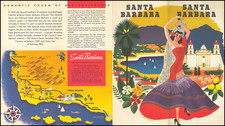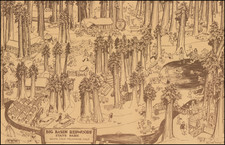Celebrating The Opening of Arlington Lodge / Lake Arrowhead
The story of Lake Arrowhead, California, begins with a practical need for water. In the early 1900s, the Lake Arrowhead Dam was initially proposed as part of an extensive waterworks project to provide irrigation to the San Bernardino Valley. The dam's construction started in 1904, but was soon halted due to litigation over water rights, specifically concerning the allocation of water supplies to landowners on the desert side of the mountains.
In 1922, the Arrowhead Lake Company, a Los Angeles syndicate, took over the dam's construction. Their vision was different from the original intent of providing irrigation. Instead, they saw an opportunity to transform the area into a resort, capitalizing on the natural beauty of the San Bernardino Mountains. This effort marked the birth of Lake Arrowhead. Over time, the lake, initially conceived as a utilitarian water reservoir, would transform into a resort destination, drawing people from all around for its scenic beauty and recreational opportunities.
The history of Lake Arrowhead is intricately woven with the story of the Arlington Lodge, a luxurious destination that became a beacon of the area's development into a resort town. The lodge's tale began when A.L. Richmond, a renowned hotelier already known for his successful Arlington Hotel in Santa Barbara, was invited to build a new lakeside resort in the picturesque setting of Lake Arrowhead.
Richmond was persuaded to take up the project due to the unique charm and potential of the locale. Working alongside architect McNeal Swasney, Richmond aimed to create an architectural marvel that could balance luxury with the natural beauty of Lake Arrowhead. Despite the project's ambitious nature, progress was swift, and soon the lodge was taking shape on the high terrace between Burnt Mill Road and the steep-gabled Normandy Village.
The $500,000 Arlington Lodge was finally ready to receive guests in June 1923. To mark the occasion, a grand champagne party and dance was held, attracting a thousand affluent guests. Visitors marveled at the architecture, the grandeur of the drawing rooms, the comfort of the bedrooms, and the stunning view of Lake Arrowhead from the terrace.
The centerpiece of the Lodge was the Great Hall, an architectural achievement that showcased a high vaulted ceiling and an enormous fireplace at one end. The opulence continued through the exclusive period furniture and the grand staircase at the opposite end of the hall. This level of luxury was rarely seen outside of the world's great cities, making the Arlington Lodge an immediate success and further elevating the status of Lake Arrowhead as a resort destination.
Tragically, the original lodge was destroyed by fire in 1938. However, Richmond's vision for Lake Arrowhead did not die in the flames. Showing the same determination that led to the lodge's creation, efforts were quickly made to rebuild the Arlington Lodge.
Brock-Higgins: the Photographers
The photographic firm of Brock-Higgins was active in Santa Barbara from circa 1897-1930. W. W. Higgins and John A. Brock were in-laws who ran separate operations for a time (Higgins in Canada, and Brock in Los Angeles) before joining forces in California. Interestingly, Higgins also experimented with inventing photographic devices, such as a wide panning camera that incorporated gears in order to produce panoramic photographs, similar to Kodak's Circuit camera. Higgins was a prolific maker of photo postcards, focusing mainly on the Santa Barbara community. Hotels, prominent residences, scenic views, and schools were all specialties. A 1925 earthquake destroyed the Higgins studio and most of the glass plate negatives. After the earthquake the firm focused more on hand-tinted photographs mounted to blank message cards. Higgins's daughter Norah wrote about her father's studio:
The earthquake demolished the studio. Being in the third floor of a central building, it was completely ruined and he continued in a semi-retired manner, having a studio in our garden. He took pictures of Montecito homes and hotels - sprawling ranch-type hotels - and then hand-painted them... He always seemed to have heavy orders, for the postcards and larger pictures were used in advertising by the concerns - Santa Barbara Postcard Photography, page 47.
Several of the firm's photographs formed the basis of lithographs, particuarly views of hotels. A view of the Potter Hotel in Santa Barbara was turned into a richly colored lithograph by the Edward Mitchell Company, while a view of Stone Hedge, the home of Mrs. Robert Louis Stevenson, was also made into a color lithograph. Higgins died in 1930.












![[Los Angeles & Orange Counties] Status of Lands Survey Conducted During 1926 Central Portion of Coastal Plain . . .](https://storage.googleapis.com/raremaps/img/small/66323.jpg)
![[ Los Angeles, Santa Barbara, and Monterey ]. Plans on the Coast of California](https://storage.googleapis.com/raremaps/img/small/72683.jpg)

![(California City, California Archive) [Lot of 4 maps related to the early development of California City]](https://storage.googleapis.com/raremaps/img/small/72782.jpg)
![(Honolulu Stereoview) Honolulu from Punchbowl [Original stereocard photograph birdseye view of Honolulu, Hawaii]](https://storage.googleapis.com/raremaps/img/small/92950.jpg)